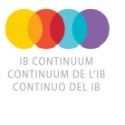Design
MYP technology aspires to develop creative problem solvers who are caring and responsible individuals, able to respond critically and resourcefully tot he demands of the increasingly technological society and to appreciate the importance of technology for life, society and the environment. Technology is one of the eight subject groups in the MYP with defined aims, objectives and assessment criteria. Design technology aims to develop a high level of design literacy by enabling students to develop critical-thinking and design skills, which they can apply in a practical context.
The aims of MYP design are to encourage and enable students to:
- Enjoy the design process, develop an appreciation of its elegance and power.
- Develop knowledge, understanding and skills from different disciplines to design and create solutions to problems using the design cycle.
- Use and apply technology effectively as a means to access, process and communicate information, model and create solutions, and to solve problems.
- Develop an appreciation of the impact of design innovations for life, global society and environments.
- Appreciate past, present and emerging design within cultural, political, social, historical and environmental contexts.
- Develop respect for others’ viewpoints and appreciate alternative solutions to problems.
- Act with integrity and honesty, and take responsibility for their own actions, developing effective working practices.

The design cycle represents the MYP design methodology of how designers develop products. This process leads to the creation of solutions that solve a problem.It is divided into four stages and these relate to the objectives of the course:
- Inquiring and analyzing: Students are presented with a design situation, from which they identify a problem to be solved. They analyse the need for a solution and conduct an inquiry into the nature of the problem.
- Developing ideas: Students write a detailed specification, which drives the development of a solution.
- Creating the solution: Students plan the creation of the chosen solution and follow the plan to create a prototype sufficient for testing and evaluation.
- Evaluating: Students design tests to evaluate the solution, carry out those tests and objectively evaluate its success. Students identify areas where the solution could be improved and explain how their solution will impact the client or target audience.
Design at Wellspring Learning Community
Here at Wellspring Learning Community we develop our students’ skills to help them adapt to real life. The MYP Design Cycle is also used to help students prepare for the personal project. Design thinking in general can be used in several applications in real life situations. Our teachers and students use multiple resources in order to acquire knowledge.
As part of the Digital Design program, the students work on several skill areas across a range of platforms. They learn about computer system fundamentals and specifications. They are exposed to design elements and principles as applied in illustrations and presentations. Students work on multimedia projects, combining various elements of design and technology. They learn coding and programming, applying them in game design and development, web design and development, and app development, and general exposure to programming languages to apply them as needed. In addition, students use spreadsheets for the purpose of budget preparation and project planning.
Assessment Criteria
There are four assessment criteria to enable teachers to achieve the aims and objectives of teaching Digital Design. Each criterion has four strands and each strand must be assessed twice per year. All criteria can be used to assess a project.


